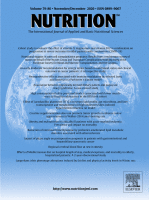The effects of 6 mo of supplementation with probiotics and synbiotics on gut microbiota in the adults with prediabetes: A double blind randomized clinical trial
Authors
Affiliations
Abstract
Objectives: The evidence of 16S rRNA genes in the gut microbiota distinguished a higher Firmicutes-to-Bacteroidetes ratio in individuals who were obese and had diabetes than in a healthy cohort. So, it seems that the modulation of intestinal microbial ecology by pro-/pre-/synbiotics may contribute to the progression and prevention of metabolic diseases. The aim of this study was to assess the effects of probiotics and synbiotic supplementation on the modification of the intestinal microbiome in adults with prediabetes.
Methods: In a randomized, double-blinded, placebo-controlled clinical trial, 120 patients with prediabetes were randomly assigned to consume 6 g/d of either a placebo containing maltodextrin (control) or multispecies probiotic or inulin-based synbiotic for 6 mo. Fecal samples were obtained at baseline and after 6 mo of supplementation. Dietary intake was assessed throughout the study (at baseline and after 3 and 6 mo). Total energy, macronutrients, and dietary fiber were calculated using a dietary program Nutritionist 4. DNA was extracted from fecal samples and the numbers of Clostridium perfringens (the represent of phylum Firmicutes), Bacteroides fragilis (the representative of Bacteroidetes) and Escherichia coli (as universal bacteria) were determined by quantitative real-time polymerase chain reactions (qPCR). The changes in the relative abundance of the two fecal bacteria before and after supplementation were analyzed and compared within and between groups.
Results: There were no significant changes in dietary intake during the study. Six mo of supplementation with probiotics resulted in a statistically significant increase in the abundance of the B. fragilis-to-E.coli ratio (mean difference [MD] ± SE 0.47 ± 0.37, P = 0.04) and decrease of the relative proportion of Firmicutes-to-Bacteroidetes representatives (MD ± SE -118.8 ± 114.6, P = 0.02). Synbiotic had no significant effect on the changes in the bacteria. There were no significant differences between the three groups.
Conclusion: The results of this study suggest that manipulation of the human gut microbiome by using probiotics could provide a potential therapeutic approach in the prevention and management of obesity and metabolic disorders such as diabetes.
Keywords: Bacteroidetes; Firmicutes; Gut microbiome; Probiotic; Synbiotic.

